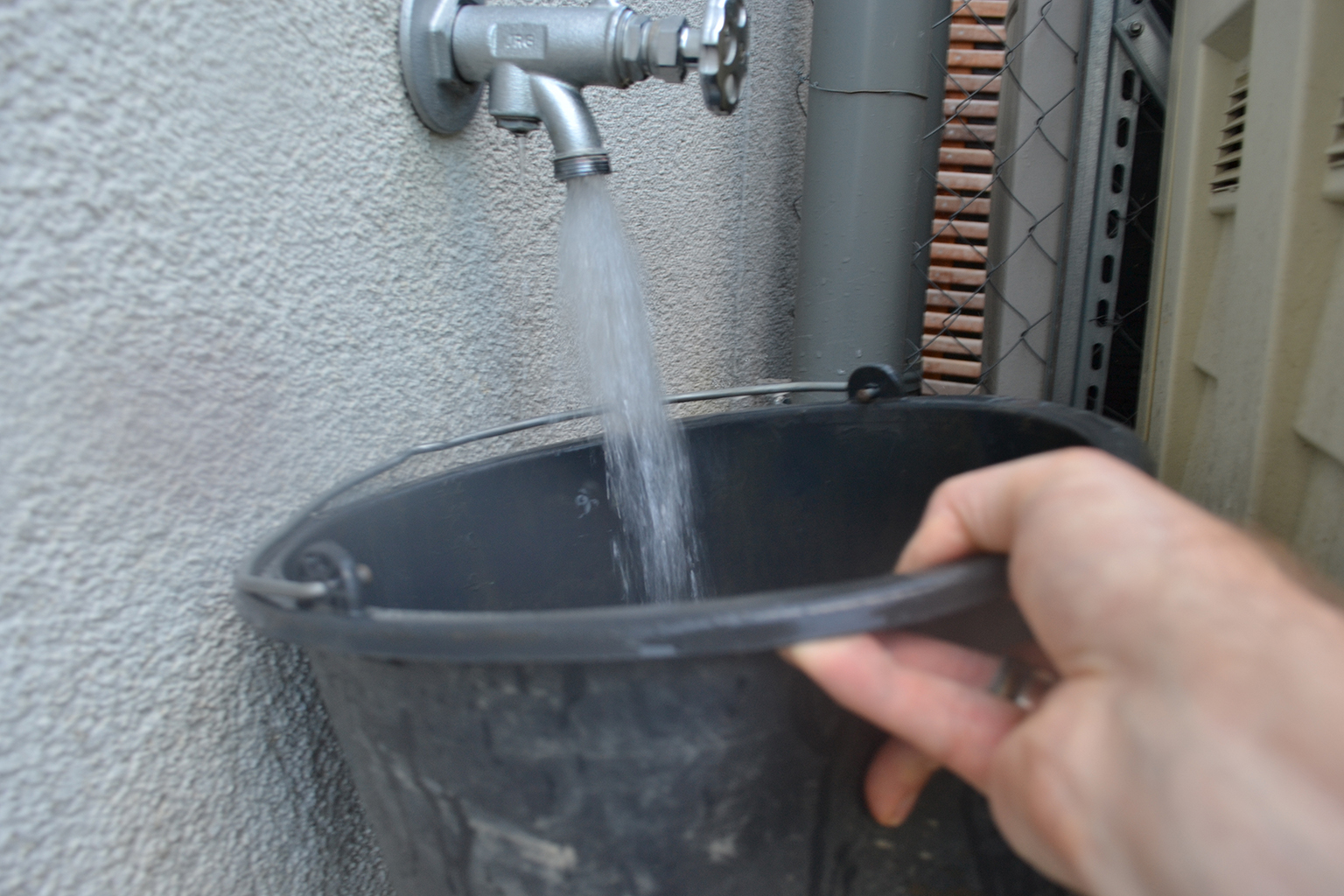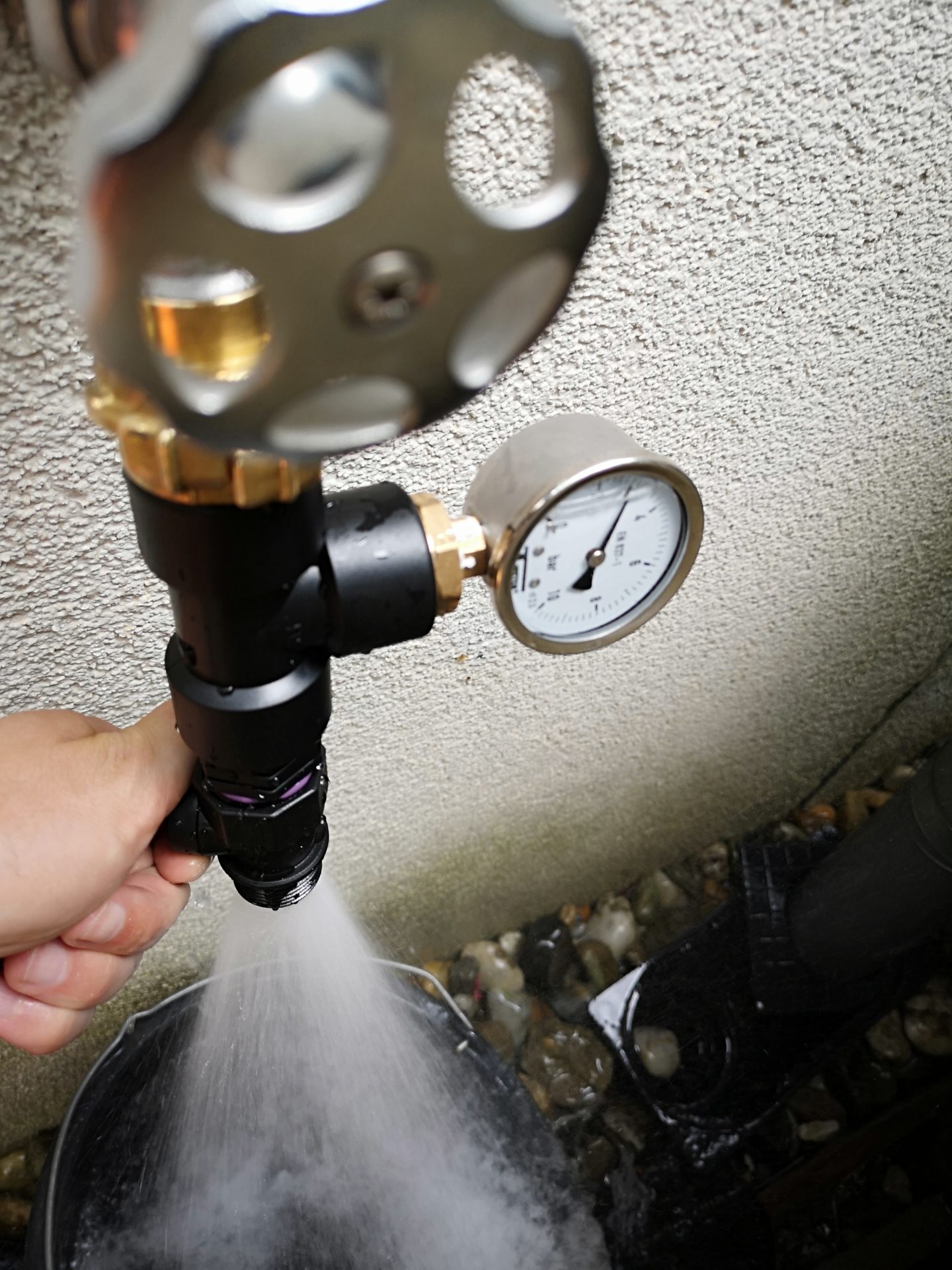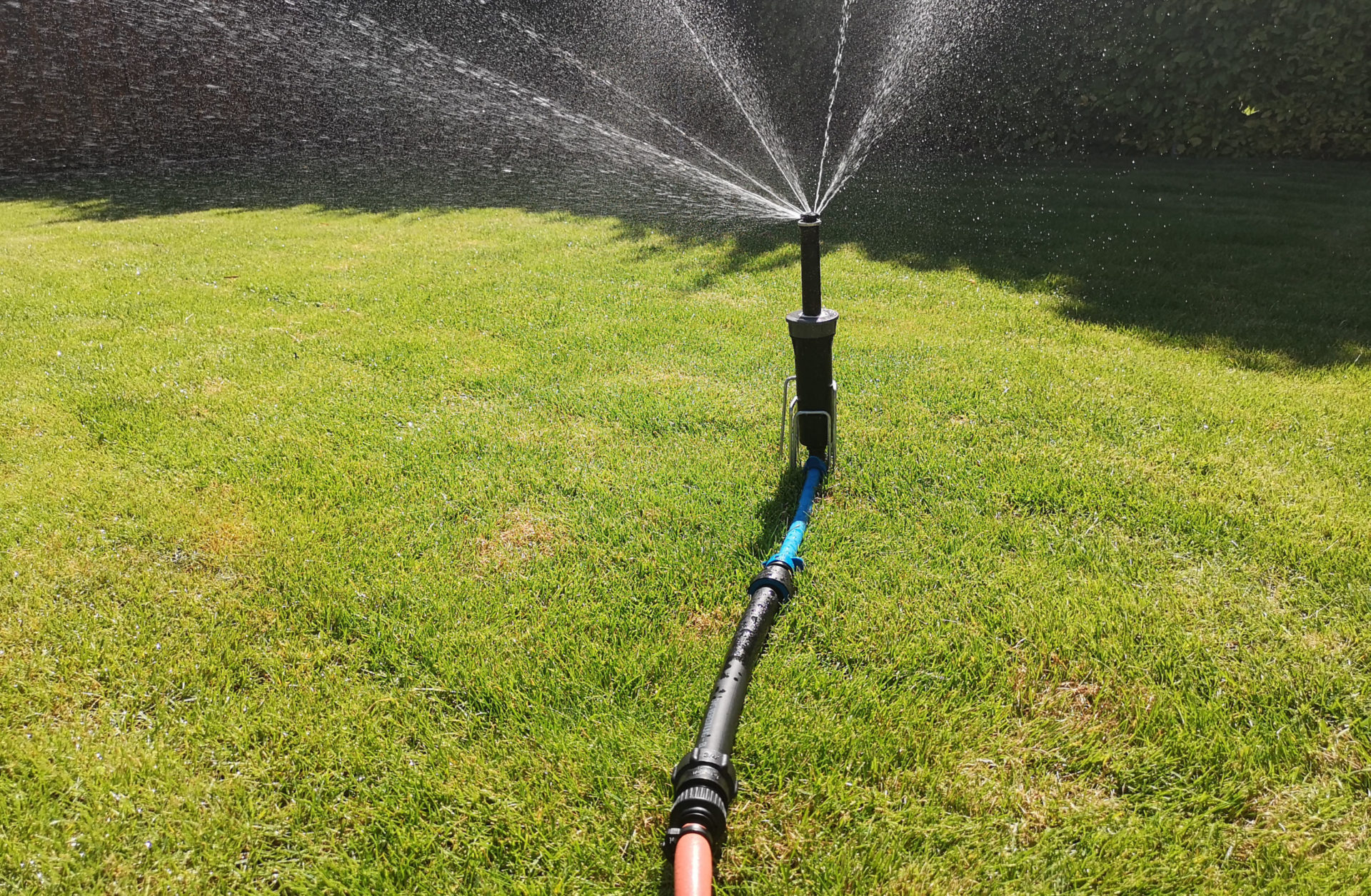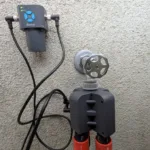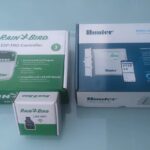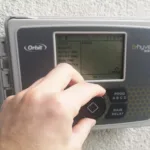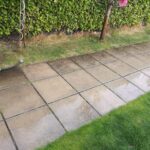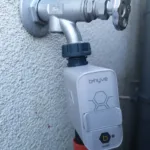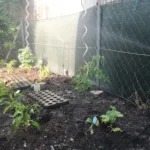The first step before realizing your own garden irrigation is to measure how much water is available. Together with the available water pressure, this then determines into how many sectors the connecting pipeline through which the water for the sprinklers flows must be divided and the number of sprinklers that can be attached to each sector.
This measurement can be done very easily with the following bucket test. All you need is a standard 5 gallon bucket.
For the test, the tap, which will later be used to feed the irrigation, is turned on fully. If a water pump is used instead, a short, approx. 3 feet long 3/4 inch hose is connected directly to the pump and the pump is started up at full power.
As soon as the water comes out of the tap or the hose connected to the pump at full power, the 5 gallon bucket is filled and the time it takes for the bucket to be filled is stopped. Then the number 3,600 (this is how many seconds there are in an hour) is divided by the calculated number of seconds. The result shows how many 5 gallon buckets can be filled with the water source per hour. If the result is now multiplied by 5, you get the gallon output per hour. That sounds more complicated than it is, the following example will make it clearer:
Example:
The 5 gallon bucket is filled in 38 seconds
3600/38 = 95 buckets / hour
95 * 5 = 475 gallons / hour
-> The water source has an output of 475 gallons per hour
A value of 29 seconds is a good value in my experience, everything closer to 20 seconds is very good. 38 seconds are also ok, with 48 seconds you can still work, longer than 57 seconds irrigation can only be realized to a very limited extent. 2 comparative values from personal experience: At home, the outside water tap fed from the public network takes 29 seconds. The pump delivering from the well with a nominal output of 1,100 gallons / hour is even better and takes 25 seconds.
If you don’t have a 5 gallon bucket but a bucket or any other container with a different capacity, it works the same way, except that the buckets per hour are then not multiplied by 5 but times the capacity of the container. Pay close attention to how much the bucket actually holds. On some buckets, water level lines indicate exactly which fill level corresponds to which number of gallons. If this is not the case, the capacity can be reliably determined with a measuring cup. Simply fill a gallon of water first into the measuring cup and then into the bucket and measure how many of the measuring cups fit in until the bucket is completely full to the brim.
Attention: The calculated gallon output directly at the water source is significantly higher than that which is actually available in the irrigation system. The reason is, on the one hand, the resistance to be overcome in the pipeline or the connecting pieces in it. Sharp, 90 degree corners in the pipeline also slow down and ensure that a smaller amount of water is available for the sprinkler. In the case of water sources with a very high output, an irrigation computer or a water distributor connected directly after the water source can also lead to a noticeable reduction, especially if the computer or water distributor is not designed for this high flow rate.
Above all, however, the water in the irrigation system must also exert pressure so that the sprinklers rise. Depending on which sprinklers are used, this necessary pressure can be higher or lower. And this exerted pressure also slows the flow of water and thus ensures that less water arrives. With typical irrigation systems, it can be estimated that approx. 70% of the amount of water measured at the water source can be effectively used in irrigation. So if you measure 550 gallon, for example, that would be 390 gallons. In detail, however, it depends on how the system is designed and can vary greatly in individual cases. The exact value can be found out with a water flow tester.

